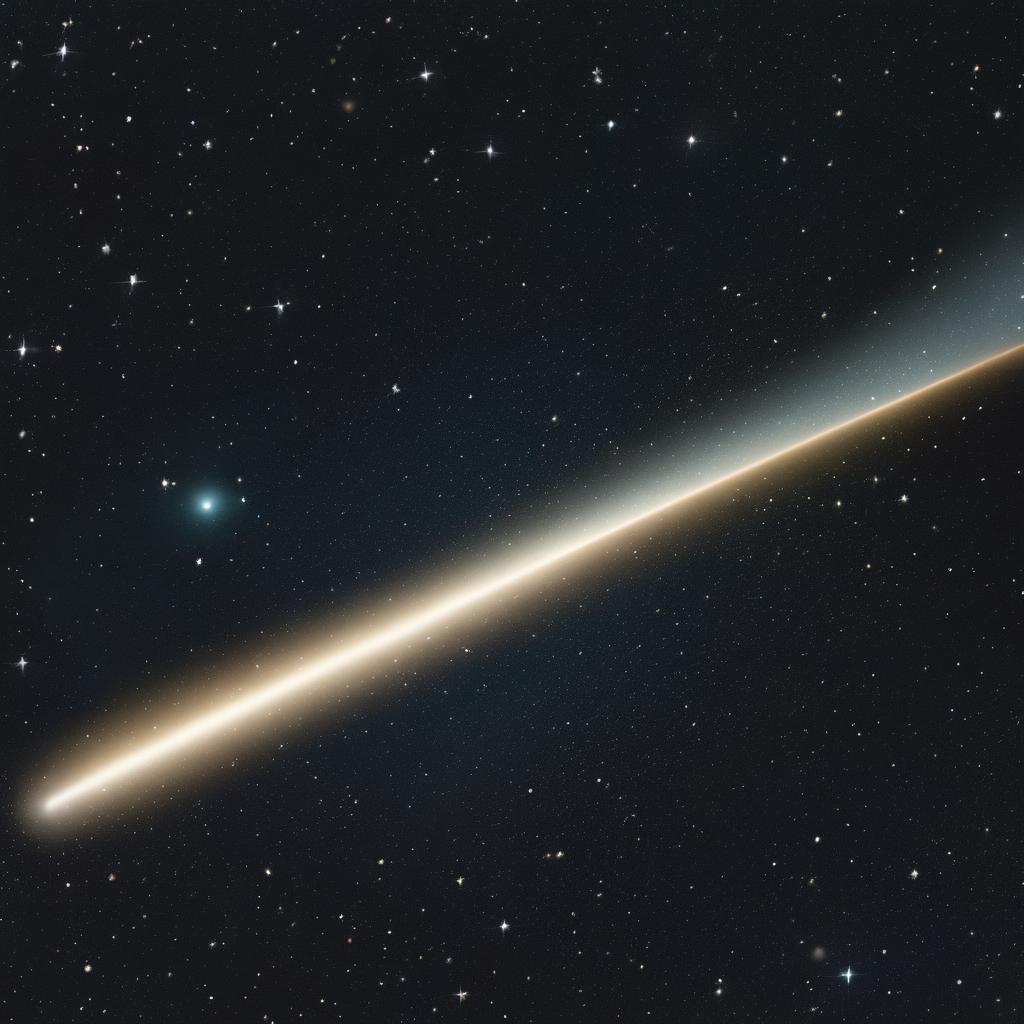NASA has unveiled new images of an interstellar comet, officially designated as 3I/ATLAS, marking just the third confirmed visitor from outside our solar system. The images depict the comet as a bright point of light encircled by a hazy halo of gas and dust, with some photographs capturing a faint, elongated tail trailing behind it.
Discovered in July, comet 3I/ATLAS has generated significant interest among scientists and amateur astronomers alike due to the rare opportunity to observe an interstellar object up close. The recent images were captured by a variety of NASA spacecraft between late September and mid-October, as the comet navigated through the inner solar system. The delayed release of these images was due to government shutdowns affecting NASA and other federal agencies.
The NASA missions contributing to these images include the PUNCH satellites dedicated to solar observations, the Solar and Heliospheric Observatory, the Mars Atmosphere and Volatile EvolutioN (MAVEN) mission, and the Perseverance Rover on Mars. Observations from the STEREO-A (Solar Terrestrial Relations Observatory) spacecraft revealed that 3I/ATLAS is traveling at an extraordinary speed of 130,000 mph.
Prior to 3I/ATLAS, only two interstellar objects had been identified entering our solar system: the cigar-shaped Oumuamua in 2017 and comet 2I/Borisov in 2019. The arrival of 3I/ATLAS has sparked intriguing speculation, with some wondering if it could be evidence of extraterrestrial technology. However, NASA officials emphasized that all observations so far align with our understanding of comets, refuting any claims of it being anything other than a celestial body.
“The differences that this comet presents are exciting for us,” stated Nicky Fox, associate administrator of NASA’s Science Mission Directorate. “It might originate from a substance that predated our solar system, which opens up new avenues for research.”
Scientists anticipate more opportunities to analyze 3I/ATLAS in the coming weeks, which will allow for a closer look at its physical characteristics, chemical composition, and potential point of origin. “This presents a new scientific opportunity,” remarked Tom Statler, NASA’s lead scientist for solar system small bodies, highlighting the insights this comet could provide regarding other star systems.
Currently, 3I/ATLAS is making its closest approach to the sun and is not observable by ground telescopes due to its proximity. However, it is expected to be visible again in early December after it passes behind the sun. On December 19, the comet will make a casual flyby of Earth, maintaining a safe distance of approximately 170 million miles.
Additionally, the James Webb Space Telescope is anticipated to observe the comet in December, with ground-based observatories, like the W.M. Keck Observatory in Hawaii, also preparing to capture images. The European Space Agency’s ExoMars Trace Gas Orbiter previously imaged 3I/ATLAS in October, showcasing the comet as a bright white dot moving through space, around 18.6 million miles away from the orbiter.
As NASA continues to process data collected from its spacecraft fleet, scientists are eager for more findings. “There will be more to come,” Statler confirmed, hinting at ongoing and future observations. The study of 3I/ATLAS not only enhances our understanding of interstellar objects but also ignites curiosity about the mysteries that lie beyond our solar system.
